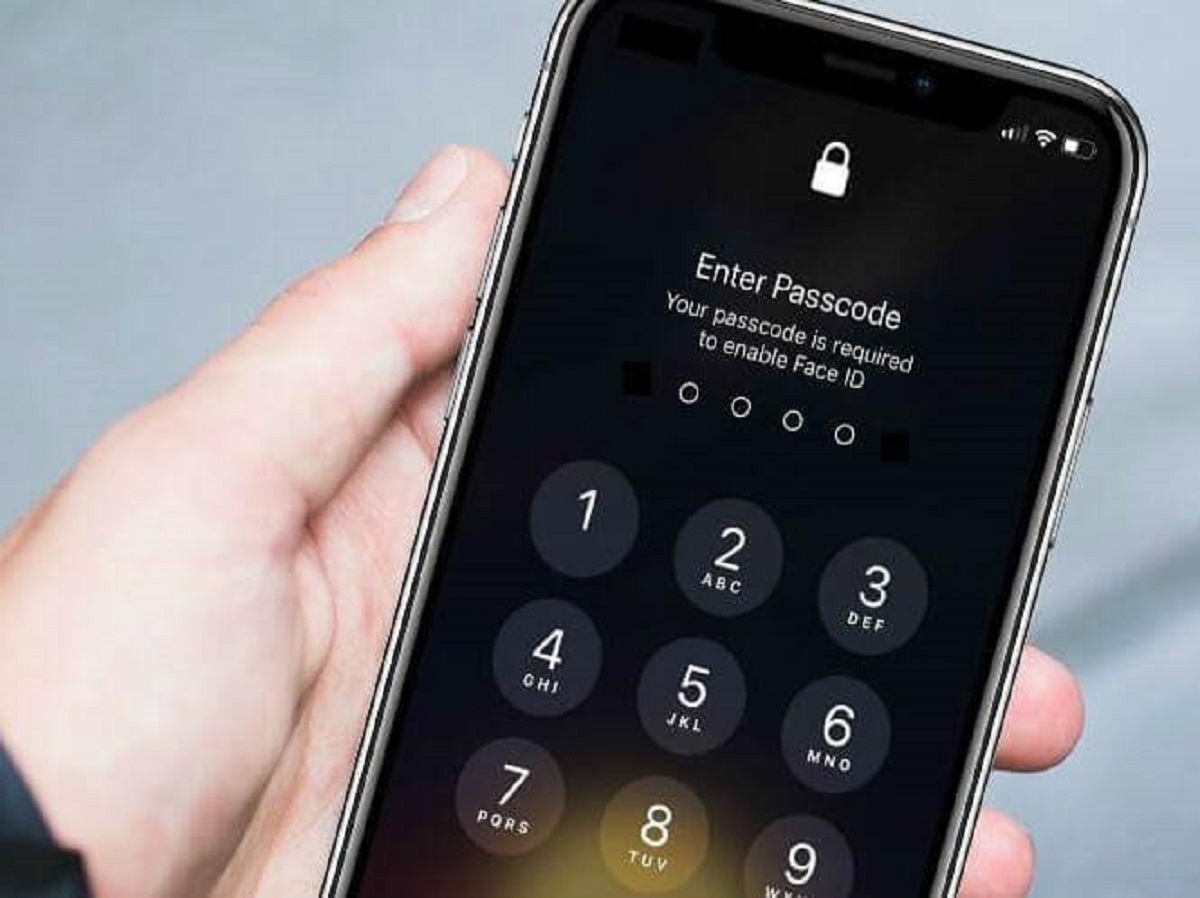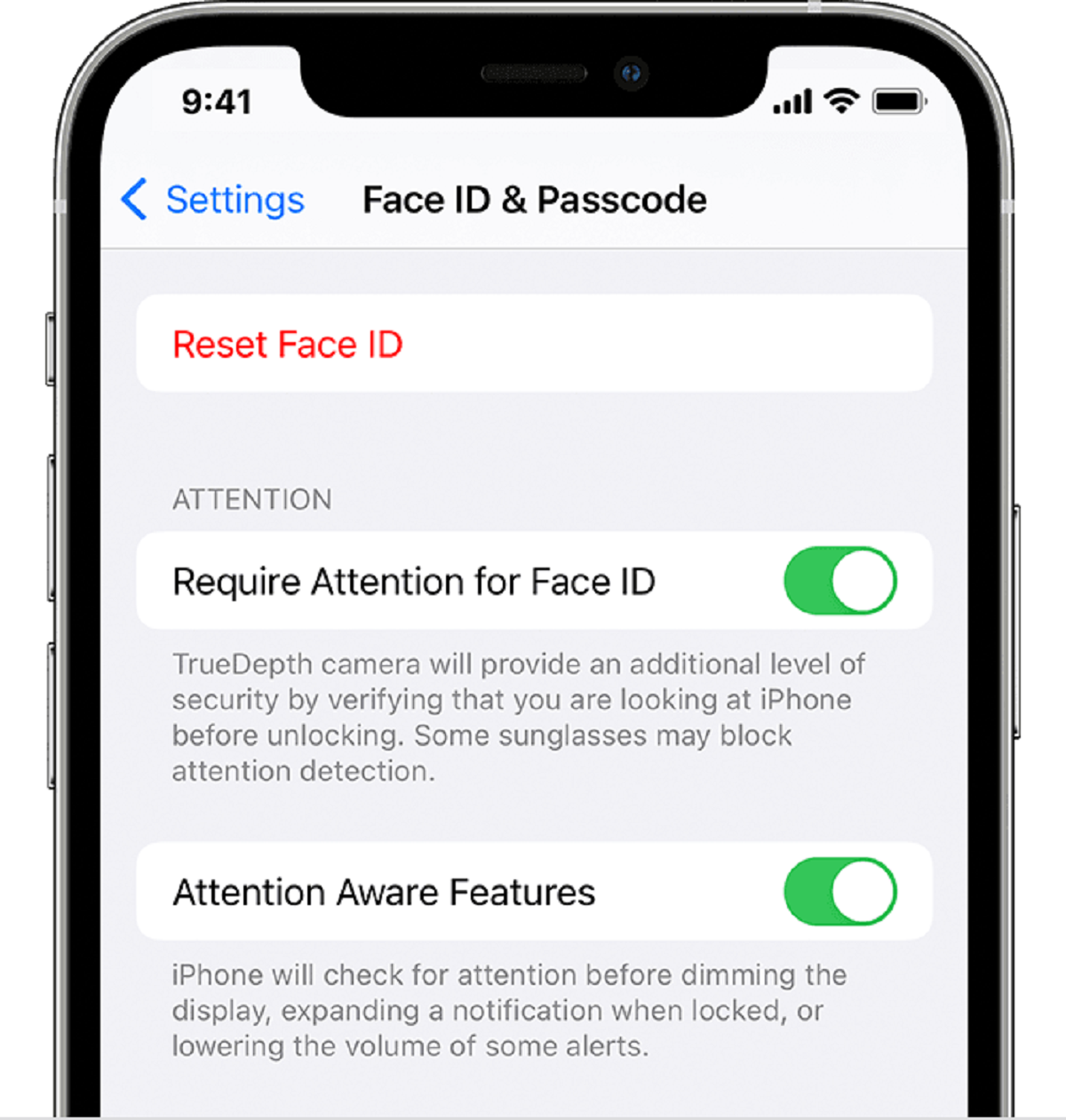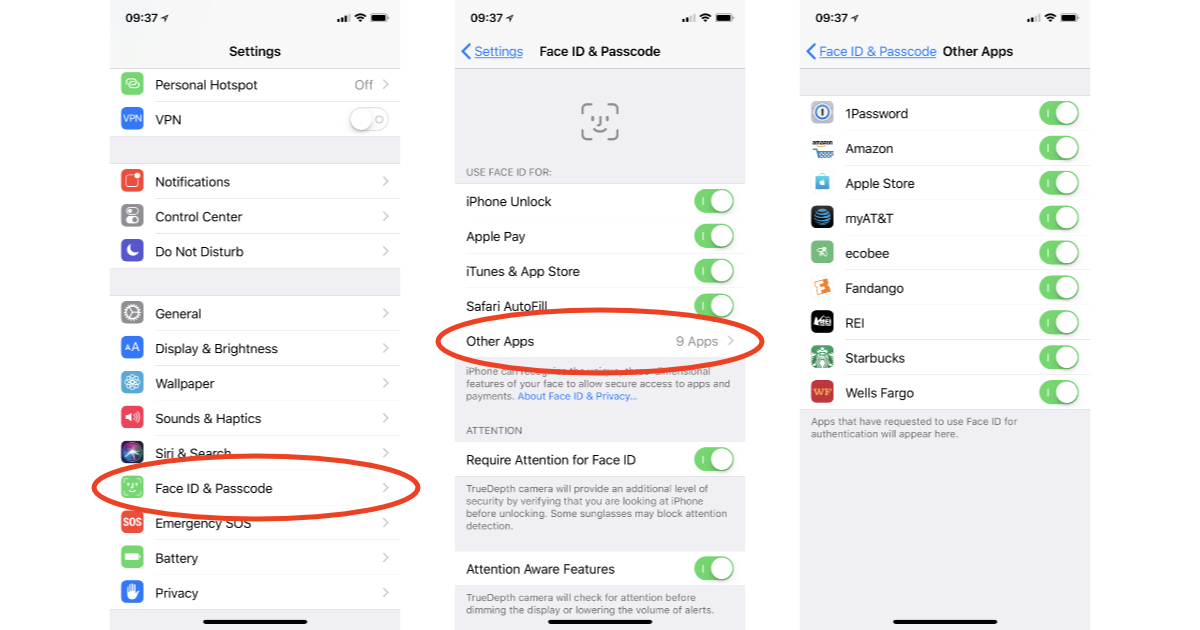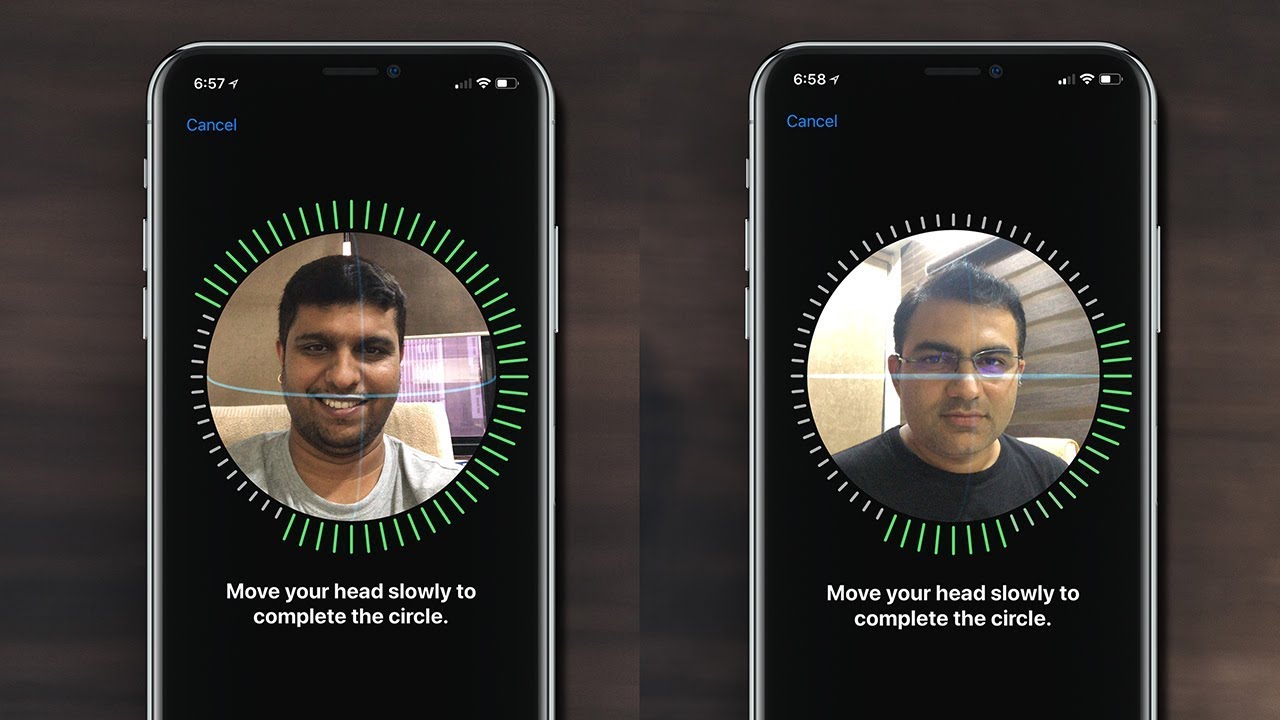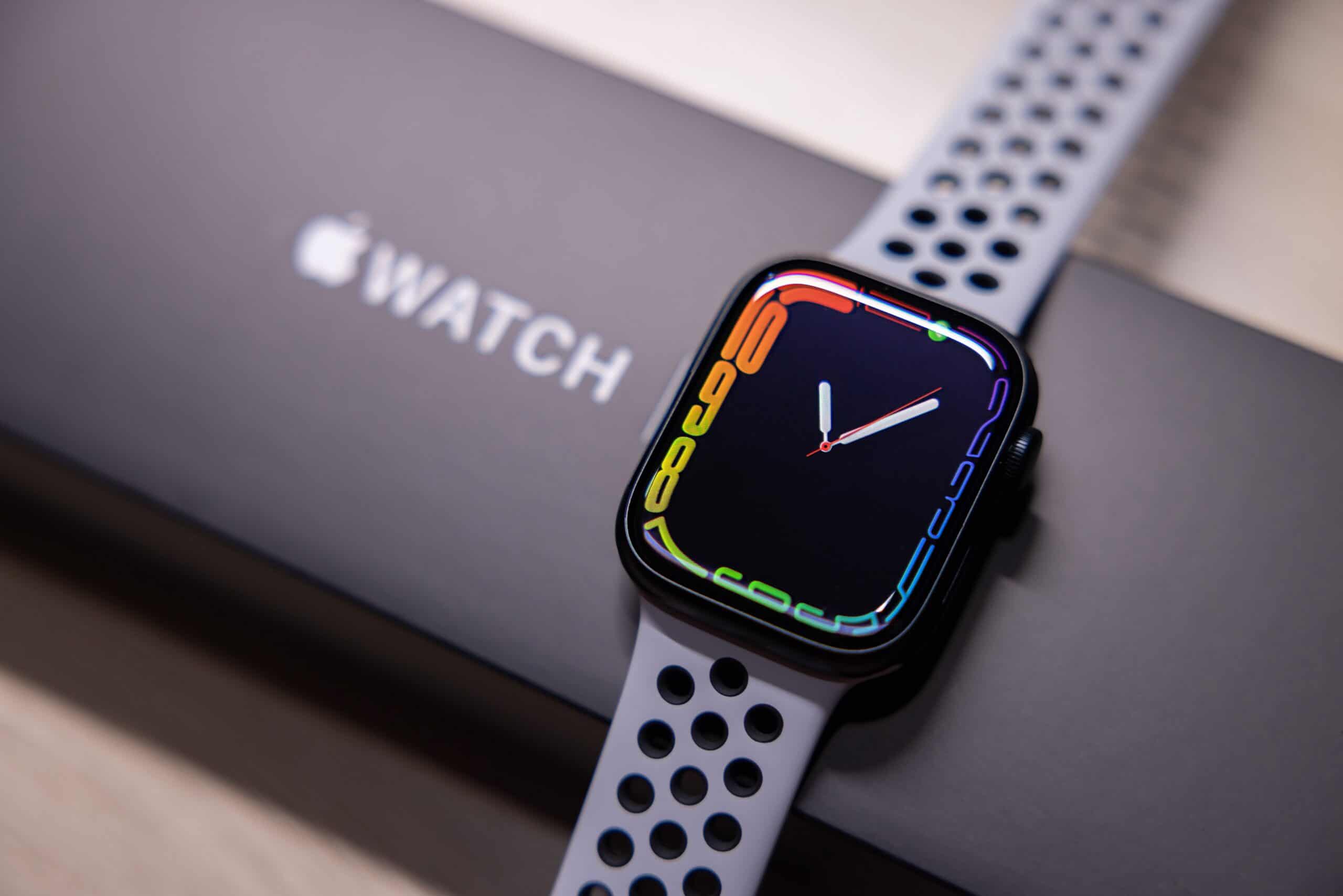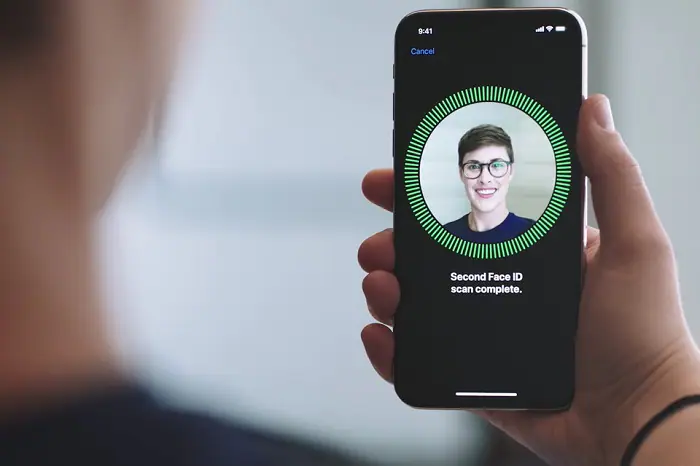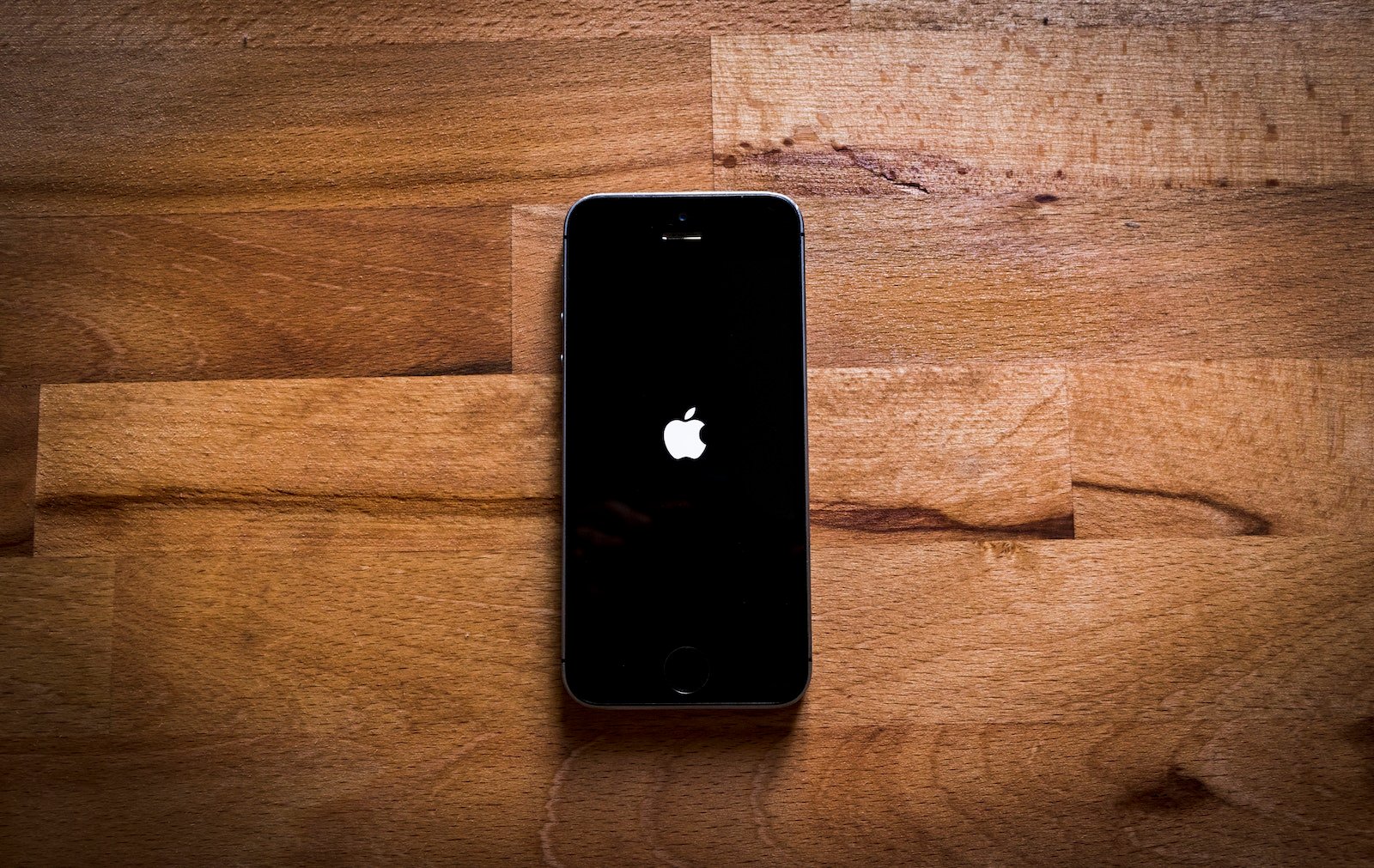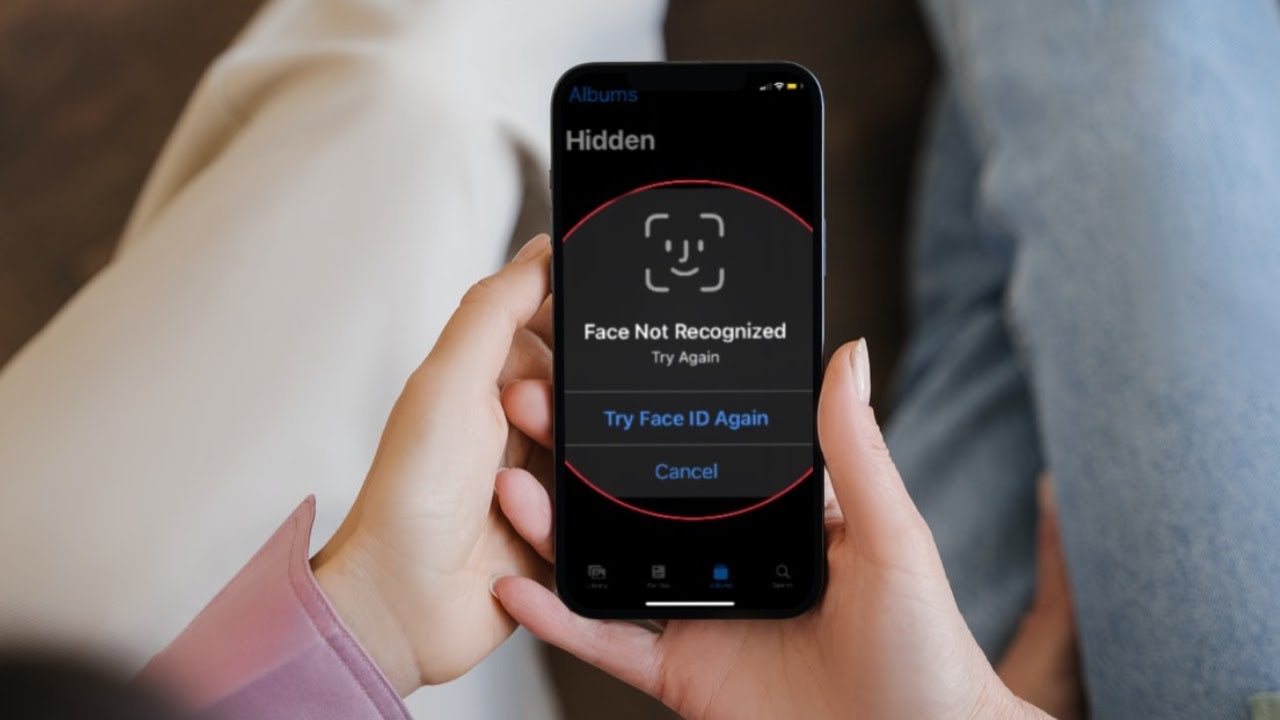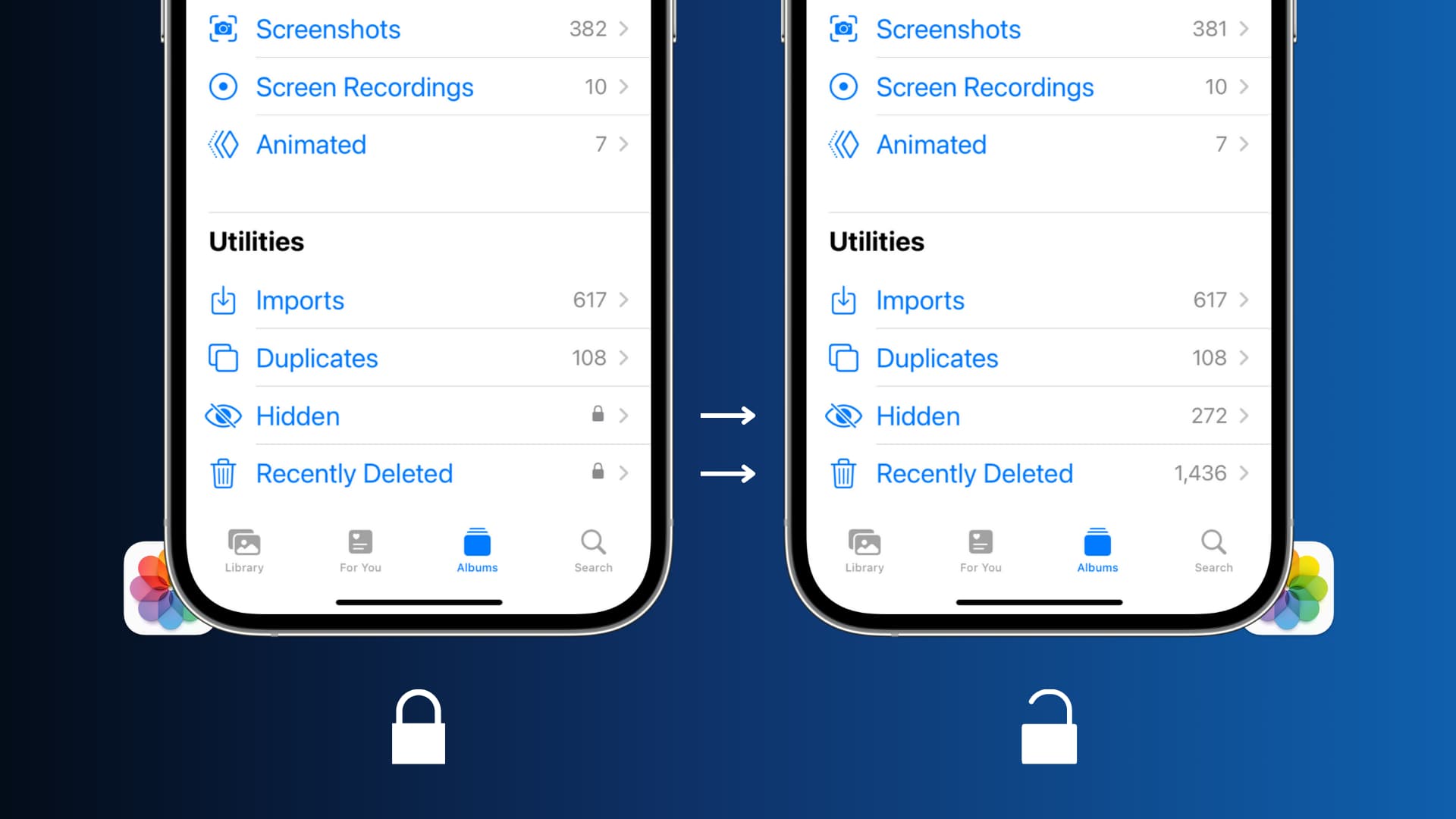Introduction
With the rise of advanced biometric technologies, like Face ID, on smartphones, it’s becoming increasingly common for users to rely on facial recognition to unlock and access their devices. However, one crucial aspect that often perplexes iPhone users is why their devices prompt them to enter a passcode to enable Face ID. In this article, we will explore the reasons behind this requirement and shed light on the importance of this added layer of security.
Apple’s decision to require a passcode before enabling Face ID is not an arbitrary measure. It is a deliberate effort to enhance the security and protect the personal data of iPhone users. While Face ID offers a convenient and futuristic way to unlock devices, it is crucial to understand the rationale behind the additional passcode requirement.
By requiring a passcode alongside Face ID, Apple aims to prevent unauthorized access to devices and protect users’ personal information from falling into the wrong hands. This two-factor authentication process adds an extra layer of security, ensuring that only the rightful owner can unlock the device and access its contents.
While facial recognition is generally reliable, it is not foolproof. There have been instances where hackers or unauthorized individuals have managed to bypass or fool facial recognition systems. By requiring a passcode, Apple mitigates the risk of such incidents and provides a safeguard against fraudulent access attempts.
Moreover, the passcode requirement assists in minimizing the potential risks associated with unauthorized Face ID setup. Without a passcode, there is a possibility that someone could register their own face on your device without your knowledge or consent. This could lead to severe privacy breaches and compromise sensitive information stored on your iPhone.
By requiring a passcode to enable Face ID, Apple encourages users to take an active role in securing their devices and ensures that they retain control over who can access their personal data. This proactive approach empowers users and instills confidence, knowing that their privacy is protected.
Furthermore, the passcode requirement serves to enhance overall device security. It acts as a fallback option in case Face ID encounters issues such as technological glitches or physical alterations that may affect its accuracy. In such scenarios, the passcode allows users to still gain access to their devices and ensures uninterrupted usage.
In summary, the requirement of a passcode to enable Face ID on iPhones is a deliberate choice by Apple to prioritize user security and protect personal data. By implementing this two-factor authentication process, Apple ensures that only the rightful owner can unlock the device and minimizes the risks of unauthorized access. It gives users control over their privacy and enhances overall device security. The added convenience of Face ID is complemented by the peace of mind provided by the passcode requirement.
Security Reasons
The requirement of a passcode to enable Face ID on iPhones is driven by a strong emphasis on security. Face ID alone may offer convenience and ease of use, but incorporating a passcode adds an essential layer of protection for users’ personal data and device security.
One of the primary security reasons for requiring a passcode alongside Face ID is to prevent unauthorized access to the device. While facial recognition technology has greatly improved, it is not infallible, and there have been instances where spoofing and bypassing facial recognition systems have been successful. By introducing a passcode, Apple ensures that the device cannot be unlocked by someone other than the authorized user, even if they manage to manipulate the face recognition technology.
Another significant security advantage of the passcode requirement is the prevention of unauthorized Face ID setup. Without a passcode, it would be possible for someone with physical access to your device to register their face and gain unauthorized access to your personal data. Adding a passcode helps to prevent such scenarios, safeguarding your privacy and sensitive information.
Furthermore, by requiring a passcode, Apple ensures that even in situations where Face ID encounters technical issues or accuracy challenges, users can still gain access to their devices. This serves as a fallback option and prevents users from being locked out of their own devices due to temporary face recognition failures or environmental factors.
The passcode requirement also provides an additional security measure when it comes to certain legal aspects. In some jurisdictions, law enforcement can compel individuals to unlock their devices using biometric methods such as Face ID. However, if a passcode is required in addition to facial recognition, it creates an extra layer of protection, as individuals cannot be forced to reveal their passcodes due to constitutional rights against self-incrimination.
Overall, the requirement of a passcode alongside Face ID on an iPhone enhances device security and protects users’ personal data from unauthorized access. It mitigates the risks associated with potential flaws in facial recognition technology, prevents unauthorized Face ID setup, ensures access even in challenging circumstances, and adds an additional layer of legal protection. By implementing this two-factor authentication, Apple prioritizes user security and reinforces their commitment to providing a secure and reliable user experience.
Protecting Your Personal Data
One of the primary reasons for requiring a passcode to enable Face ID on an iPhone is to protect your personal data. Your smartphone is a treasure trove of sensitive information, ranging from personal messages and emails to financial data and private photos. By implementing the passcode requirement alongside Face ID, Apple ensures that only the authorized user can access this valuable data.
While Face ID provides a convenient and secure method of unlocking your device, there may be instances where an unauthorized person attempts to gain access to your phone. With a passcode in place, you have an added layer of security that acts as a barrier against unauthorized individuals. Even if someone manages to replicate or manipulate your facial features, they would still need to input the correct passcode to unlock the device.
The passcode requirement also protects your personal data in case your iPhone gets lost or stolen. Face ID alone may not provide sufficient protection in such situations. However, with a passcode, the thief or finder of your device would need to break through another security barrier to gain access to your data, making it significantly more challenging for them to do so.
Another aspect to consider is the potential risks associated with storing your personal information in the cloud or using online services. While cloud services and online platforms have their own security measures in place, it is always wise to have an additional layer of protection on your device. By requiring a passcode, Apple ensures that even if someone manages to gain unauthorized access to your online accounts, they still cannot unlock your device without the passcode.
Furthermore, the passcode protects your personal data from potential breaches and privacy violations caused by physical access to your device. Without a passcode, someone with physical access could bypass the facial recognition system and gain unrestricted access to your personal files, messages, and apps. By incorporating a passcode, Apple reduces this risk and ensures that only you can unlock your device and access your personal data.
In summary, the passcode requirement alongside Face ID plays a crucial role in protecting your personal data. It adds an additional layer of security against unauthorized access to your device and ensures that your sensitive information remains private, even in the event of loss or theft. By incorporating a passcode, Apple provides users with peace of mind, knowing that their personal data is safeguarded and that they have control over who can access their valuable information.
Preventing Unauthorized Access
One of the primary objectives of requiring a passcode to enable Face ID on iPhones is to prevent unauthorized access to your device. While Face ID itself provides a high level of security, the passcode acts as an additional layer of protection, ensuring that only the rightful owner can gain access to the device.
Face ID, with its advanced facial recognition technology, makes it extremely difficult for unauthorized individuals to bypass the security measures and unlock your device. However, there are instances where someone may attempt to manipulate or trick the system to gain access. In such cases, the passcode requirement becomes pivotal in preventing these unauthorized access attempts.
The passcode acts as a unique identifier that only the authorized user possesses. Even if someone manages to mimic your facial features or tries to manipulate the system using photos or videos, they would still need to input the correct passcode to unlock the device. This two-factor authentication adds an extra layer of security and ensures that only you, the rightful owner, can access your iPhone.
Another scenario where the passcode plays a crucial role is in situations where you may need to temporarily disable Face ID. For instance, if you are in a high-security environment or dealing with sensitive information, you can quickly disable Face ID and rely solely on the passcode for unlocking your device. This prevents any potential loopholes in facial recognition technology and provides a more secure means of accessing your device.
In addition to external unauthorized access attempts, the passcode also prevents inadvertent access to your device. For example, if you have young children or others who may try to access your device without permission, the passcode requirement ensures that they cannot unlock the phone or gain access to your personal data.
Moreover, requiring a passcode to enable Face ID also helps to protect your device in case it gets lost or stolen. Without the passcode, it would be significantly easier for someone to gain access to your personal information if they were to find or steal your iPhone. By incorporating the passcode, Apple adds an essential security measure that acts as a strong barrier against unauthorized access.
In summary, the passcode requirement alongside Face ID on iPhones plays a pivotal role in preventing unauthorized access to your device. Whether it is someone attempting to manipulate facial recognition technology or accidental access by others, the passcode acts as an added layer of protection. It ensures that only the rightful owner can unlock the device and gain access to the valuable personal data stored within.
Potential Risks of Unauthorized Face ID Setup
While Face ID offers a secure and convenient way to unlock your iPhone, there are potential risks associated with unauthorized Face ID setup. Without the requirement of a passcode, there is a possibility that someone could register their own face on your device without your knowledge or consent, leading to severe privacy breaches and compromised security.
One of the primary risks is the unauthorized addition of faces to your Face ID database. For instance, if someone gains physical access to your device, they could potentially register their face using the Face ID settings. This unauthorized Face ID setup could allow them to unlock your device and gain access to your personal data, messages, and apps.
Moreover, there is a risk of someone manipulating or exploiting your Face ID system to gain unauthorized access. While Face ID has sophisticated anti-spoofing mechanisms in place to detect and prevent impersonation attempts, there have been instances where determined individuals have managed to bypass or fool facial recognition systems. Without the added layer of a passcode requirement, these unauthorized individuals could potentially gain full access to your device and sensitive information.
Another potential risk is the deliberate misuse of Face ID by individuals who may have malicious intentions. For example, if someone with ill intent gains access to your device and manages to set up their face in the Face ID system, they could pose as you and access your accounts, make unauthorized purchases, or perform other fraudulent activities, causing significant harm and potential financial loss.
Additionally, in situations where you share your device with others, such as family members or colleagues, there is a risk of unintentional Face ID setup without your awareness. If someone else registers their face on your device, they may be inadvertently granted unauthorized access to your personal data. A passcode requirement acts as a safeguard against such situations, limiting access to only those who possess the correct passcode.
Overall, the potential risks of unauthorized Face ID setup emphasize the importance of incorporating a passcode requirement. The passcode serves as a vital line of defense against unauthorized registration of faces and helps prevent privacy breaches, security compromises, and fraudulent activities. By implementing the passcode alongside Face ID, Apple aims to provide users with enhanced control over who can access their device and protect them from potential risks associated with unauthorized face registration.
Minimizing Fraudulent Activities
The requirement of a passcode to enable Face ID on iPhones plays a pivotal role in minimizing fraudulent activities. By adding an extra layer of security, Apple aims to reduce the risk of unauthorized access and protect users from potential financial losses and identity theft.
One of the key ways in which the passcode helps to minimize fraudulent activities is by preventing unauthorized individuals from gaining access to your device and personal data. Even if someone manages to bypass or spoof the facial recognition system, they would still need to input the correct passcode to unlock the iPhone. This two-factor authentication process significantly reduces the chances of impersonation and protects your device and personal information from falling into the wrong hands.
The passcode requirement also acts as a deterrent against potential hackers or individuals attempting to gain unauthorized access to your accounts and perform fraudulent activities. With a passcode in place, they would need both your physical device and the passcode to gain full access, making it much more difficult for them to compromise your accounts or steal sensitive information.
Furthermore, the passcode adds an additional layer of security in situations where you may need to authenticate transactions or access sensitive information. Some apps and services require the use of a passcode in conjunction with Face ID to ensure secure access and minimize the risk of fraudulent activities.
Additionally, the passcode requirement helps protect against unauthorized purchases and in-app transactions. If your device falls into the wrong hands, the passcode acts as a barrier, preventing unauthorized individuals from making purchases or carrying out financial transactions using your device and associated accounts.
Another aspect to consider is the potential use of Face ID for identity verification. With the rise of digital identity verification methods, incorporating a passcode requirement alongside Face ID provides an additional layer of authentication, reducing the risk of fraudulent activities related to identity theft or impersonation.
In summary, the passcode requirement alongside Face ID serves as a valuable tool in minimizing fraudulent activities. It acts as a deterrent against unauthorized access, adds an additional layer of security to transactions and sensitive information, and prevents unauthorized purchases and financial transactions. By combining the convenience of Face ID with the added protection of a passcode, Apple aims to provide a safer, more secure digital experience for users, minimizing the risks associated with fraudulent activities.
Ensuring Your Privacy
The requirement of a passcode to enable Face ID on iPhones plays a crucial role in ensuring your privacy. By adding this additional layer of security, Apple aims to protect your personal data and maintain the confidentiality of your information.
Face ID alone provides a secure method of unlocking your device using facial recognition technology. However, incorporating a passcode requirement adds an extra level of privacy protection by limiting access to only those who possess both the physical device and the correct passcode.
The passcode requirement allows you to have control over who can access your iPhone. It ensures that even if someone gains physical access to your device, they would need to input the correct passcode to unlock it and access your personal data. This provides peace of mind, knowing that your privacy is safeguarded.
In situations where privacy is of utmost importance, such as sensitive work-related information or personal conversations, the passcode requirement serves as an additional safeguard. By disabling Face ID temporarily and relying solely on the passcode, you can ensure that unauthorized individuals cannot gain access to your confidential data.
Furthermore, the passcode protects your privacy in case of loss or theft of your device. Without the passcode, it would be significantly easier for someone who finds or steals your iPhone to gain access to your personal information. By incorporating the passcode, Apple ensures that even if your device falls into the wrong hands, your privacy remains intact.
The passcode requirement also provides an added layer of protection in scenarios where you share your device with others, such as family members or colleagues. By requiring a passcode, you can prevent unauthorized access to your personal data, applications, and other sensitive information.
Moreover, the passcode offers protection against potential privacy breaches caused by involuntary or accidental access to your device. For example, if you misplace your iPhone and someone finds it, the passcode acts as a barrier, preventing them from easily accessing your personal data and compromising your privacy.
In summary, the passcode requirement alongside Face ID ensures your privacy by limiting access to your device and personal data. It allows you to have control over who can unlock your iPhone and access your information. By incorporating this additional layer of protection, Apple prioritizes privacy and provides users with the reassurance that their personal data remains confidential and secure.
Enhancing Device Security
The requirement of a passcode to enable Face ID on iPhones goes beyond protecting personal data and privacy—it also enhances overall device security. By implementing this additional layer of security, Apple ensures that users’ devices are better protected against unauthorized access and potential compromises.
While Face ID provides a robust biometric authentication method, it is not infallible. There have been instances where determined individuals or advanced hacking techniques have managed to bypass or deceive facial recognition systems. By requiring a passcode, Apple adds a strong and reliable fallback option in case of any vulnerabilities or flaws within the Face ID system.
Moreover, the passcode provides an additional level of security in scenarios where Face ID may encounter technical or environmental challenges. Factors such as poor lighting conditions, changes in physical appearance, or even facial injuries may disrupt reliable face recognition. In such instances, the passcode allows users to regain access to their devices and ensures uninterrupted usage.
The passcode requirement also protects against potential threats from phishing attacks. Phishing attempts often aim to trick users into revealing their passcodes or other sensitive information under the guise of legitimate requests. By incorporating a passcode, Apple ensures that even if a user falls victim to a phishing attack, the passcode provides an extra layer of protection, hindering unauthorized access.
Another aspect to consider is data encryption. When you enable a passcode on your device, it activates the built-in hardware encryption capabilities, further securing your personal data. This encryption ensures that even if someone gains physical access to your device, they cannot easily retrieve or decipher your data without the correct passcode.
Additionally, the passcode requirement serves as a vital security measure when dealing with sensitive work-related information. Whether it’s corporate emails, confidential documents, or other proprietary data, the passcode ensures that unauthorized individuals cannot access sensitive information, providing peace of mind for business users.
Furthermore, the passcode enhances security during interactions with third-party apps and services. Many applications utilize Touch ID or Face ID for authentication; however, they often require the added security of a passcode to ensure a higher level of protection. By requiring a passcode alongside Face ID, Apple enables users to make use of these secure authentication methods while maintaining consistent security across various apps and services.
In summary, the passcode requirement alongside Face ID on iPhones enhances device security. It provides a reliable fallback option, protects against technical and environmental challenges, safeguards against phishing attacks, enables data encryption, ensures security for sensitive work-related information, and promotes secure interactions with third-party apps. By incorporating this additional layer of security, Apple reinforces its commitment to providing users with a secure and protected user experience.
Conclusion
The requirement of a passcode to enable Face ID on iPhones serves as a crucial security measure to protect users’ personal data, prevent unauthorized access, and ensure a high level of privacy. While Face ID provides a convenient and advanced method of unlocking devices using facial recognition, the addition of a passcode adds an extra layer of security and control.
The passcode requirement enhances device security by acting as a safeguard against unauthorized access attempts, whether through face manipulation or accidental access by others. It prevents fraudulent activities by making it significantly more challenging for unauthorized individuals to gain access to personal data, make unauthorized purchases, or perform identity theft.
By incorporating a passcode alongside Face ID, Apple prioritizes user privacy, ensuring that only the authorized user can unlock the device and access sensitive information. The passcode requirement also protects against potential risks associated with unauthorized Face ID setup, such as someone registering their face on your device without your knowledge or consent.
Furthermore, the passcode adds an extra layer of security in situations where Face ID may encounter challenges, such as technical glitches or changes in physical appearance. It serves as a fallback option, guaranteeing uninterrupted access to the device and reducing reliance on the face recognition system alone.
Overall, the passcode requirement complements the convenience and reliability of Face ID, providing users with peace of mind in the protection of their personal data. It serves as a vital tool in minimizing fraudulent activities, enhancing device security, and ensuring privacy. By implementing this two-factor authentication approach, Apple remains committed to delivering a secure and user-centric experience for iPhone users.







